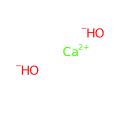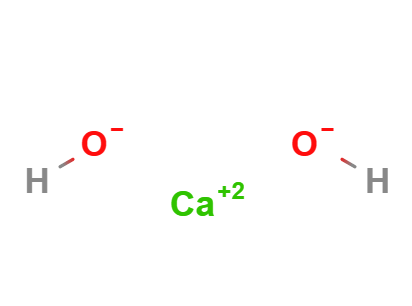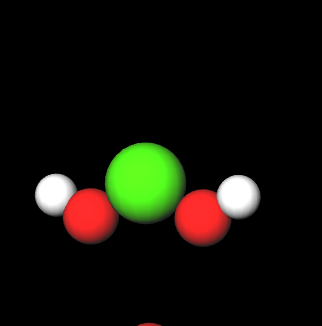Check the ingredients!
... live healthy!


| "Descrizione" by Frank123 (12008 pt) | 2024-May-14 09:17 |
| Evaluation | N. Experts | Evaluation | N. Experts |
|---|---|---|---|
| 1 | 6 | ||
| 2 | 7 | ||
| 3 | 8 | ||
| 4 | 9 | ||
| 5 | 10 |
E526 (Calcium hydroxide) is a chemical compound obtained by a calcination process of calcium carbonate.
The name defines the structure of the molecule:
The synthesis process takes place in several stages:
The compound "calcium hydroxide" is a colorless crystal or a white powder and is obtained when calcium oxide (called lime or quicklime) is mixed or skimmed with water. It has many names, including hydrated lime, caustic lime, construction lime, quicklime, cal, or pickling lime.
It appears as an odourless white powder with poor water solubility .

What it is used for and where
Food
An ingredient listed in the European food additives list as E526, it acts as an acidity regulator and reacts with organic acids. It also acts as a thickener and hardener.
Medical
Dentistry. It is an antimicrobial that acts on dentin, apical barrier and dental lesions effectively (1), but may be ineffective against some bacterial species present in root canal infections. Anti-endotoxin agent.
Cosmetics
Buffering agent. It is an iingredient that can bring an alkaline or acid solution to a certain pH level and prevent it from changing, in practice a pH stabiliser that can effectively resist instability and pH change.
Safety
It is a restricted ingredient III/15c as a Relevant Item in the Annexes of the European Cosmetics Regulation 1223/2009. Entries 15b and 15c stipulate the restrictions and conditions of use concerning Lithium hydroxide and Calcium hydroxide respectively. The entries include the mention 'Other uses' without indication on limitations or requirements for use. The European Cosmetic Toiletry and Perfumery Association - the SCCNFP adopts the attached proposal to extend entries 15b and 15c by the addition of a text in the column 'field of application', in the column 'maximum authorised concentration' and in the column 'conditions of use and warning to be labelled' (1).
Wording of conditions of use and warnings
a) Hair straighteners containing two components: calcium hydroxide and a guanidine salt. 7% (as calcium hydroxide)
(b) pH ajuster for depilatories pH < 12.7
(c) Other uses (e.g. pH adjuster, processing aid) pH < 11
Other uses
Safety
It is a strong alkaline agent and can cause injury to epidermal tissues at certain concentrations.
 |  |
 |
References_____________________________________________________________________
(1) Estrela, C. and Holland, R., 2003. Calcium hydroxide: study based on scientific evidences. Journal of Applied Oral Science, 11, pp.269-282.
Abstract. The characteristics of calcium hydroxide come from its dissociation into calcium and hydroxyl ions. The action of these ions on tissues and bacteria explains the biological and antimicrobial properties of this substance. Under the conditions of this retrospective of literature, based on scientific evidences, it is possible to state that: 1. Dentin is considered the best pulpal protective, and calcium hydroxide has proved, through numerous studies, its capability of inducing the formation of a mineralized bridge over pulpal tissue. 2. It is necessary, whenever possible, to provide time for calcium hydroxide paste to manifest its potential of action on the microorganisms present in endodontic infections. The maintenance of a high concentration of hydroxyl ions can change bacteria enzymatic activity and promote its inactivation. 3. The site of action of hydroxyl ions of calcium hydroxide includes the enzymes in the cytoplasmic membrane. This medication has a large scope of action, and therefore is effective on a wide range of microorganisms, regardless their metabolic capability. In microbial world, cytoplasmic membranes are similar, irrespective from microorganisms morphological, tinctorial and respiratory characteristics, which means that this medication has a similar effect on aerobic, anaerobic, Gram-positive and Gram-negative bacteria. 4. Calcium hydroxide as temporary dressing used between appointments promotes better results on the periapical healing process than the treatment in one appointment.
| Evaluate |